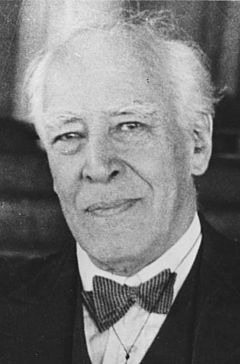Konstantin Stanislavski
| Konstantin Stanislavski | |
|---|---|
 |
|
| Born | Konstantin Sergeievich Alekseiev 17 January [O.S. 5 January] 1863 Moscow, Russian Empire |
| Died | 7 August 1938 (aged 75) Moscow, Soviet Union |
| Occupation |
Actor Theatre director Theatre theorist |
| Literary movement |
Naturalism Symbolism Psychological realism Socialist realism |
| Notable works | Founder of the MAT Stanislavski's 'system' An Actor's Work An Actor's Work on a Role My Life in Art |
| Spouse | Maria Petrovna Perevostchikova (stage name: Maria Lilina) |
Konstantin Sergeievich Stanislavski (né Alexeiev; Russian: Константи́н Серге́евич Станисла́вский; 17 January [O.S. 5 January] 1863 – 7 August 1938) was a seminal Russian theatre practitioner. He was widely recognised as an outstanding character actor and the many productions that he directed garnered a reputation as one of the leading theatre directors of his generation. His principal fame and influence, however, rests on his 'system' of actor training, preparation, and rehearsal technique.
Stanislavski (his stage name) performed and directed as an amateur until the age of 33, when he co-founded the world-famous Moscow Art Theatre (MAT) company with Vladimir Nemirovich-Danchenko, following a legendary 18-hour discussion. Its influential tours of Europe (1906) and the US (1923—4) and its landmark productions of The Seagull (1898) and Hamlet (1911—12) established his reputation and opened new possibilities for the art of the theatre. By means of the MAT, Stanislavski was instrumental in promoting the new Russian drama of his day—principally the work of Anton Chekhov, Maxim Gorky, and Mikhail Bulgakov—to audiences in Moscow and around the world; he also staged acclaimed productions of a wide range of classical Russian and European plays.
He collaborated with the director and designer Edward Gordon Craig and was formative in the development of several other major practitioners, including Vsevolod Meyerhold (whom Stanislavski considered his "sole heir in the theatre"), Yevgeny Vakhtangov, and Michael Chekhov. At the MAT's 30-year anniversary celebrations in 1928, a massive heart attack on-stage put an end to his acting career (though he waited until the curtain fell before seeking medical assistance). He continued to direct, teach, and write about acting until his death a few weeks before the publication of the first volume of his life's great work, the acting manual An Actor's Work (1938). He was awarded the Order of the Red Banner and the Order of Lenin and was one of the first to be granted the title of People's Artist of the USSR.
...
Wikipedia
